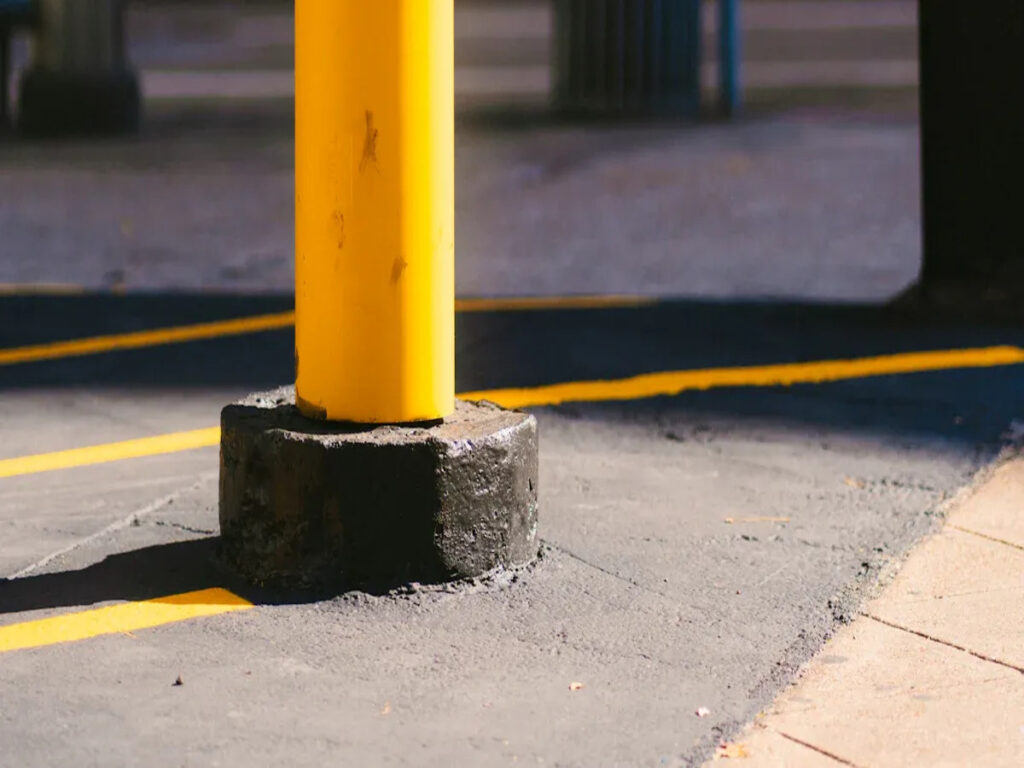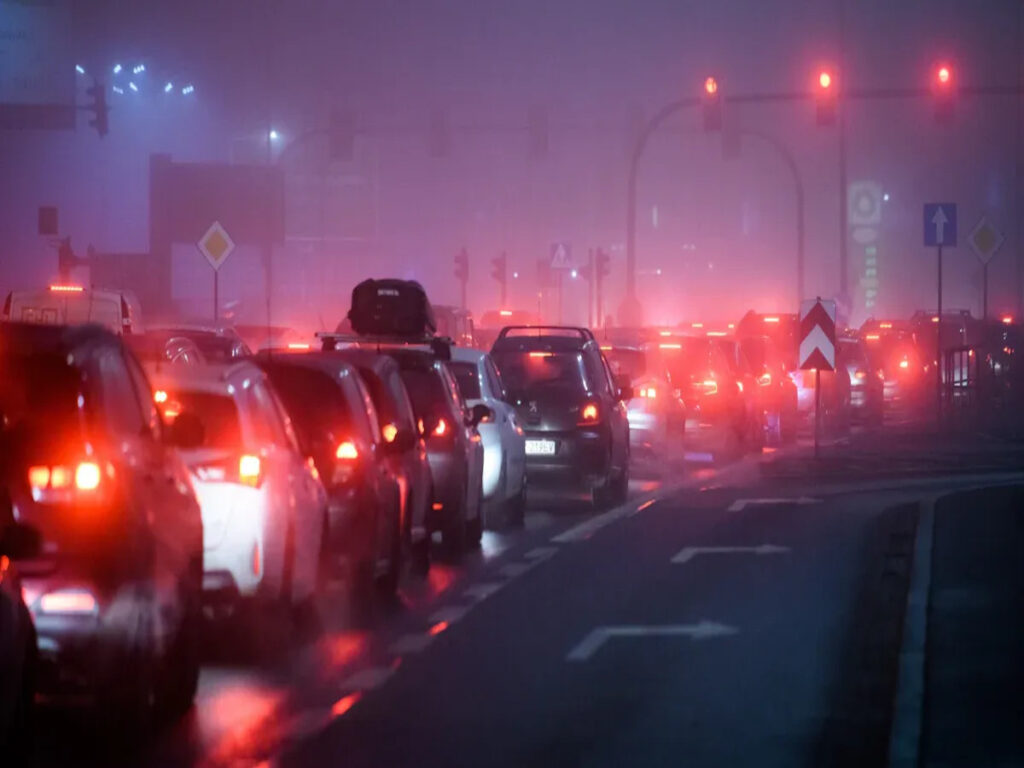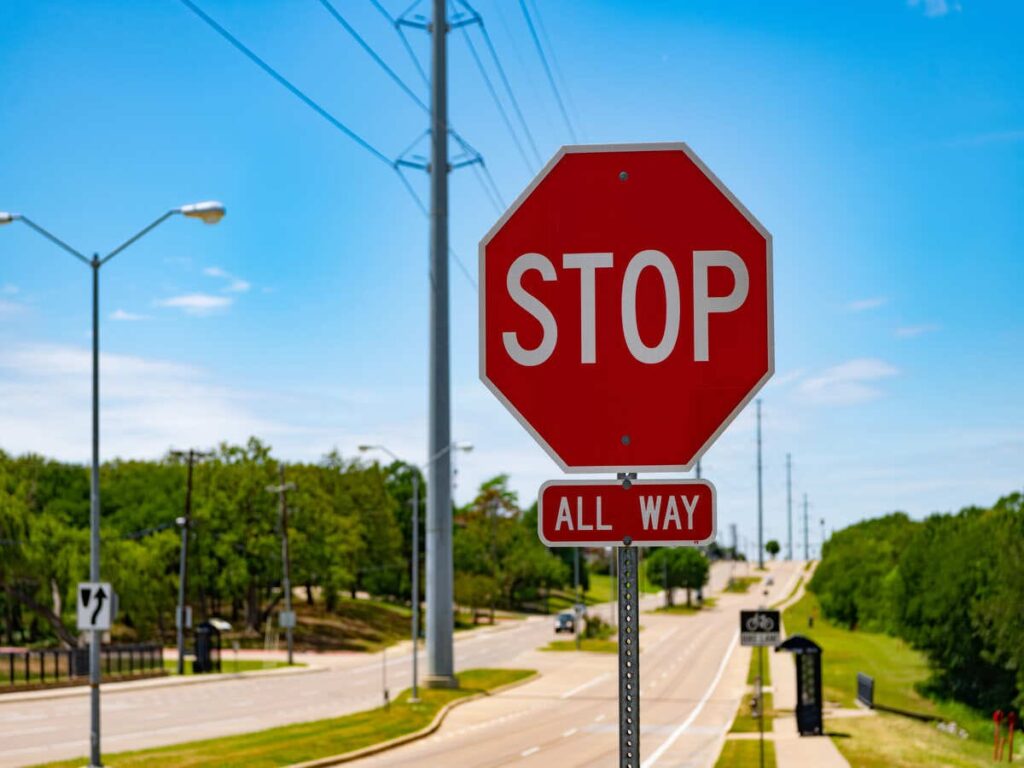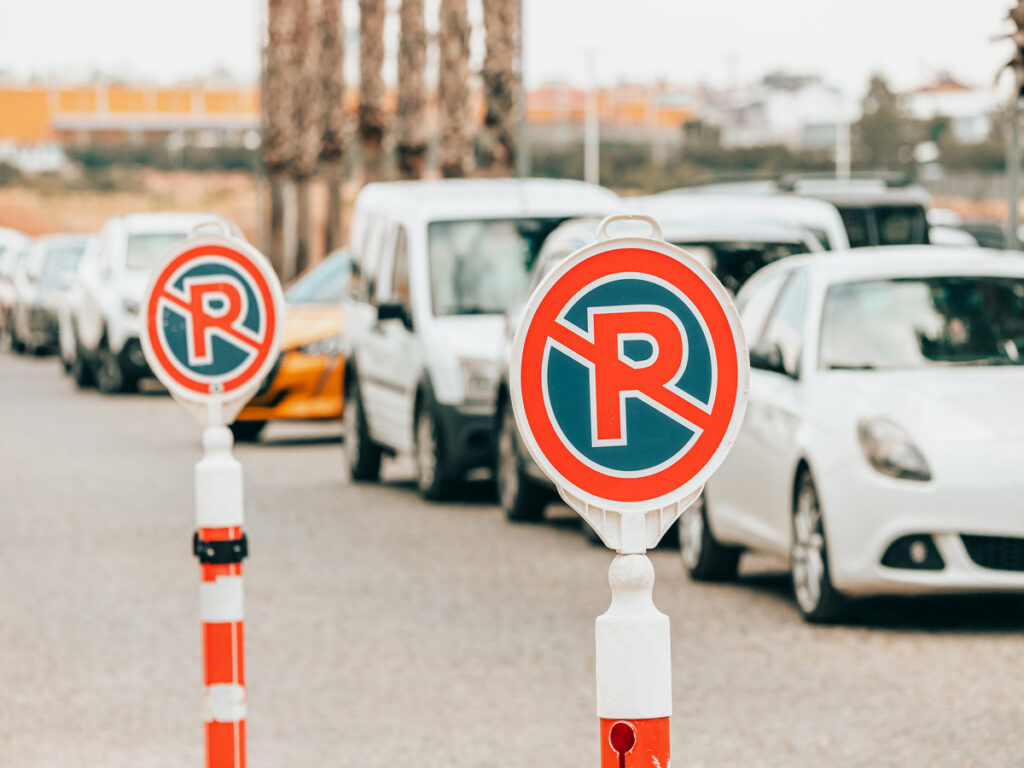
Urban noise pollution presents a persistent challenge for city residents. Traffic control bollards serve a dual purpose: increasing safety and offering a means to manage noise. Studies show that urban planning, including the strategic use of bollards, can reduce traffic noise by influencing flow and separating busy roads from quieter areas. Traffic control bollards, when arranged with careful design, help limit the spread of pollution and contribute to safer, more comfortable environments. As traffic moves through cities, bollards stand as both safety guardians and tools for noise reduction.
OPTRAFFIC provides high-quality traffic control bollards that not only enhance safety but also contribute to managing urban noise pollution. With a growing customer base that includes many traffic management companies, OPTRAFFIC helps cities design and implement effective solutions for both traffic control and noise reduction. Our bollards play a crucial role in creating safer, quieter urban environments while improving the quality of life for residents.
Key Takeaways
- Traffic control bollards help reduce noise by blocking and scattering sound from vehicles, making city streets quieter and safer.
- Choosing the right bollard materials, like soft rubber or foam, and arranging them in multiple rows improves their ability to absorb and reduce traffic noise.
- Placing bollards strategically between busy roads and quiet areas, especially near corners or curves, maximizes their noise-blocking effect.
- Bollards work best when combined with other noise control methods, such as green spaces and low walls, to create healthier and more comfortable urban environments.
- Smart bollards with sensors and sustainable materials offer new ways to monitor and reduce traffic noise while supporting city safety and environmental goals.
Traffic Control Bollards and Urban Noise
What is Traffic Noise?
Traffic noise comes from vehicles moving on roads, including cars, trucks, and motorcycles. This noise can reach high levels, especially in busy cities. Experts measure traffic noise in decibels (dBA) using sound level monitors. The table below shows typical noise levels for different traffic sources:
| Source/Area | Approximate dBA Level | Measurement Distance/Context |
|---|---|---|
| Diesel truck | 85 | Measured at 15 meters (50 feet) |
| Noisy urban area (daytime) | 80 | Ambient urban environment |
| Suburban commercial area | 65 | Ambient suburban environment |
Traffic noise levels depend on several factors. More vehicles and higher speeds increase noise. Trucks make much more noise than cars. Noise levels drop as you move farther from the road or when obstacles like buildings or bollards block the sound. Traffic control bollards can help reduce noise by acting as barriers between roads and quieter spaces.
Urban Planning and Noise Levels
Urban planning shapes how noise spreads in a city. Planners use many strategies to manage noise pollution. These include:
- Separating homes and parks from busy roads.
- Adding green spaces and open areas.
- Designing building layouts to block or absorb noise.
- Using traffic control devices like bollards to slow down vehicles and guide traffic flow.
- Choosing quieter pavement materials and encouraging walking or cycling.
Planners also use noise mapping and data from traffic models to predict where noise will be highest. They combine several measures to achieve noticeable noise reduction. For example, reducing traffic speed or volume can lower noise by about 3 dB(A), which people can hear as a clear difference.
Bollards’ Role in Soundscapes
Bollards play a key role in shaping the sound environment of urban areas. When placed correctly, bollards act as sound barriers. They block or redirect traffic noise away from sensitive areas like sidewalks, playgrounds, and homes. Traffic control bollards also help organize traffic, making streets safer and quieter. By working with other traffic control devices, bollards support environmental goals and improve quality of life. Cities use bollards not only for safety but also as part of a larger plan to manage noise pollution and create healthier urban spaces.
Noise Impact and Regulations
Health Effects of Noise
Noise from traffic affects people’s health in many ways. Studies in large cities show that living near busy roads can increase the risk of mental health problems. For example, a study in Hong Kong followed over 13,000 people and found that night-time traffic noise above 40 decibels made depression more likely. The study used advanced models to measure noise and controlled for other factors like age, health, and where people lived. Young people and students felt the effects of traffic noise even more. Other research shows that noise acts as a stressor. It can trigger the body’s stress response, raise hormone levels, and disturb sleep. Over time, this constant exposure to traffic noise can lower quality of life and harm mental wellbeing. These findings highlight the need for cities to manage noise from traffic to protect public health.
Noise Rules for Cities
Many cities have rules to control noise and reduce the impact of traffic. These rules set limits on how loud noise can be in different places and at different times. For example, New York City requires buildings to have thick walls to block noise. Seattle treats any noise from traffic that can be heard inside a home at night as a violation. Chicago sets indoor and outdoor noise limits, especially at night. Other cities, like Boston and Dallas, have special rules for construction noise. The table below shows some examples:
| City | Noise Regulation Type | Thresholds / Standards | Time Periods / Notes |
|---|---|---|---|
| New York | Acoustical isolation | Thick walls/flooring required | Continuous |
| Seattle | Plainly audible criteria | No traffic noise inside homes at night | 10 pm – 7 am |
| Chicago | Indoor/outdoor dB(A) limits | 55 dB(A) indoor, 84 dB(A) outdoor | Night: 10 pm – 8 am |
| Boston | Construction noise | Allowed weekdays 7 am – 6 pm | Weekdays only |
| Dallas | Construction noise | Allowed 7 am – 7 pm weekdays | Daytime and weekend curfews |
These rules help cities keep noise from traffic at safe levels and protect people from its harmful effects.
How Noise Travels in Urban Areas
Noise from traffic spreads through cities in complex ways. Scientists use models to understand how sound moves between buildings and along streets. One method divides roads into small points and traces how noise bounces off buildings or bends around corners. This helps show where traffic noise will be loudest. Experiments with scale models also test how noise travels in street canyons, measuring how long sound stays and how loud it gets. Other models treat vehicles as point sources and track how noise reflects and diffracts in built-up areas. These studies show that building shapes, heights, and even trees can change how traffic noise moves. By understanding these patterns, city planners can design better layouts and use barriers like bollards to reduce noise from traffic.
Acoustic Design of Bollards

Basics of Acoustic Design
Acoustic design focuses on controlling how sound moves through an environment. In urban areas, this means managing noise from vehicles and other sources. Engineers use acoustic principles to shape how noise travels, aiming to create quieter spaces. They study how materials, shapes, and layouts affect sound waves. Good acoustic design can help reduce traffic noise and improve comfort for people living or working nearby.
Bollards play a role in this process. Their design can change how noise spreads along streets and sidewalks. When engineers plan bollards, they consider how these structures interact with sound waves. They look at how bollards reflect, absorb, or block noise. This approach helps cities use bollards not just for safety but also for noise reduction performance.
Physical Properties: Height, Material, Layout
The physical properties of bollards have a direct impact on their acoustic effectiveness. Height matters because taller bollards can block more noise from reaching sensitive areas. Shorter bollards may only stop noise close to the ground. The material of a bollard also affects how it handles sound. Some materials absorb noise, while others reflect it. For example, concrete and steel reflect sound, while rubber or composite materials offer better absorption.
Layout refers to how bollards are arranged. A single row of bollards may not provide much noise reduction. Multiple rows or staggered patterns can increase sound attenuation mechanisms. The spacing between bollards also changes how well they work as traffic noise barriers. Closer spacing blocks more noise, while wider gaps let more sound pass through.
Tip: Engineers often use a combination of height, material, and layout to maximize noise reduction performance.
| Property | Effect on Noise | Example Materials | Layout Options |
|---|---|---|---|
| Height | Blocks higher-frequency noise | 1m, 1.5m, 2m | Single or double row |
| Material | Absorption or reflection | Concrete, steel, rubber | Solid or perforated |
| Layout | Sound insulation, diffusion | N/A | Staggered, linear |
Bollards as Sound Barriers
Bollards can act as sound barriers when designed with acoustic principles in mind. Unlike solid walls, bollards allow air and light to pass through, but they still disrupt the path of noise. When sound waves hit a row of bollards, some of the energy reflects back toward the road. Some energy passes through, but the bollards scatter and weaken the noise. This process is called sound attenuation mechanisms.
The effectiveness of bollards as traffic noise barriers depends on their material and arrangement. Materials with high absorption reduce the amount of noise that bounces back. Perforated or textured surfaces can also help by breaking up sound waves. Engineers measure noise reduction performance by testing how much sound passes through or around the bollards.
Note: Bollards do not block all noise, but they can lower noise levels enough to make a noticeable difference in busy urban areas.
Placement for Noise Reduction
Placement plays a key role in the acoustic performance of bollards. Engineers position bollards between roads and sensitive areas, such as parks or residential zones. The goal is to intercept noise before it reaches people. Placing bollards closer to the noise source increases their effectiveness. Arranging them in multiple rows or using staggered patterns can boost sound insulation and absorption.
Strategic placement also considers the direction of traffic and the shape of nearby buildings. For example, placing bollards near corners or along curved roads can help redirect noise away from quiet spaces. Combining bollards with other features, such as landscaping or low walls, can further improve noise reduction performance.
To learn more about the key considerations for bollard placement and ensuring optimal performance, check out the blog Understanding MUTCD Guidelines for Bollard Placement. It offers valuable insights into the guidelines for proper bollard placement to meet safety, regulatory, and environmental goals.
Materials and Noise Reduction Performance
Material Choice and Sound Absorption
Material selection plays a critical role in the acoustic effectiveness of bollards. Engineers focus on sound absorbing materials to improve noise reduction performance. Porosity, particle size, and thickness influence how well a material absorbs noise. The microstructure, including pore size and distribution, also affects absorption. Polyurethane adhesives can create a transition layer that enhances sound absorption. When engineers add waste tire rubber to nitrile foam rubber, they optimize both absorption and durability. These choices help bollards achieve better noise reduction performance in busy urban environments.
- Porosity and particle size affect how sound waves interact with the surface.
- The right adhesive improves bonding and forms a layer that increases absorption.
- Rubber content changes the pore structure, which helps with low-frequency noise.
Soft vs Hard Materials
Soft materials, such as rubber or foam, offer superior sound absorption compared to hard materials like steel or concrete. Sound absorbing materials trap noise within their structure, reducing the amount that passes through or reflects. Hard materials tend to reflect noise, which can increase sound levels in nearby areas. Engineers often choose soft materials for bollards in locations where noise reduction performance is a priority. The use of soft materials supports better acoustic outcomes and creates quieter spaces.
Perforated and Textured Bollards
Perforated and textured bollards improve acoustic performance by disrupting sound waves. Perforations allow noise to enter the bollard, where sound absorbing materials inside capture and dissipate energy. Textured surfaces scatter noise, reducing direct reflection and enhancing absorption. These design features help bollards act as effective sound barriers. Engineers use the Johnson-Champoux-Allard-Lafarge model to evaluate how these features influence acoustic properties and absorption.
Surface Finishes and Sound
Surface finishes impact how bollards interact with noise. Smooth finishes reflect more sound, while rough or textured finishes increase absorption. The choice of finish can change the acoustic environment around bollards. Engineers select finishes that support sound absorbing materials and maximize noise reduction performance. By combining the right surface finish with optimal material choices, bollards provide both safety and effective noise control.
Bollard Layout for Noise Control

Strategic Placement
Strategic placement of bollards shapes the acoustic environment in cities. Planners position bollards between roads and quiet zones to intercept traffic noise. In low traffic neighborhoods, cities use traffic control bollards to restrict through traffic and slow vehicles. Research from UK cities shows that these strategies reduce both traffic volumes and air pollution. Residents report quieter streets and safer spaces. In Oxford, sensors recorded lower noise levels after installing bollards in LTNs. The soundscape shifted to more natural sounds, showing the acoustic benefits of careful bollard placement.
Combining Bollards with Other Measures
Cities often combine bollards with other noise control tools. Planners add green spaces, trees, and low walls near bollards to absorb and scatter traffic noise. This layered approach improves acoustic performance. Bollards work well with landscaping to block direct sound paths. When cities use multiple traffic calming strategies together, they create stronger barriers against noise. This teamwork between bollards and other features leads to quieter, healthier neighborhoods.
Traffic Calming with Bollards
Traffic calming strategies use bollards to slow vehicles and guide traffic flow. Planners install bollards at key points to narrow roads or block shortcuts. These changes force drivers to reduce speed, which lowers traffic noise. Bollards also protect sidewalks and bike lanes, making streets safer for everyone. By controlling vehicle movement, bollards help create a more pleasant acoustic environment.
Case Studies
Several cities have used bollards as part of their traffic calming strategies. In London, LTNs with fixed and foldable bollards led to quieter streets and improved air quality. Residents noticed less traffic noise and more natural sounds. In Barcelona, planners combined bollards with green corridors to reduce noise and promote walking. These examples show how thoughtful bollard layout and acoustic design can transform urban soundscapes.
Measuring Noise Reduction Performance
Impact Studies
Researchers have conducted many impact studies to understand how bollards affect traffic noise. These studies use sound meters to record noise levels before and after installing bollards. Scientists often focus on busy streets and residential areas. They measure how the acoustic environment changes when bollards appear in the landscape. Results show that well-designed bollards can lower noise by several decibels. This reduction makes a real difference for people living nearby. Some studies also use computer models to predict how bollards will change the acoustic profile of a street. These models help planners choose the best locations and designs for maximum noise reduction.
Bollards vs Other Barriers
Cities use different barriers to control noise. Bollards offer unique advantages compared to solid walls or fences. Acoustic tests show that bollards can break up and scatter sound waves. This effect reduces the direct path of noise from roads to homes. Unlike tall walls, bollards allow light and air to pass through. They also blend better with urban design. Some acoustic experts note that combining bollards with other features, such as plants or textured surfaces, increases their effectiveness. While solid barriers block more noise, bollards provide a balance between acoustic performance and city aesthetics.
| Barrier Type | Acoustic Effectiveness | Urban Integration | Airflow/Light |
|---|---|---|---|
| Bollards | Moderate | High | Yes |
| Walls | High | Low | No |
| Fences | Moderate | Medium | Sometimes |
Before and After Results
Before and after studies give clear evidence of the acoustic benefits of bollards. In many cases, noise levels drop by 3 to 5 decibels after installation. Residents report less disturbance from traffic. The acoustic quality of parks and sidewalks improves. Planners often use these results to guide future projects. They see that bollards not only improve safety but also enhance the acoustic environment. These findings support the use of bollards as a practical solution for urban noise management.
Safety Bollards and Additional Benefits
Pedestrian Safety
Safety bollards create a physical barrier between vehicles and sidewalks, making city streets safer for pedestrians. Many cities have installed these barriers to protect people from traffic and prevent vehicles from entering pedestrian zones. The following table highlights how different cities use safety bollards to improve safety for pedestrians:
| City | Bollard Use Case Description | Impact on Pedestrian Safety |
|---|---|---|
| New York City, USA | Installed over 200 high-security steel bollards in Times Square after a vehicle attack | Created strong physical barriers protecting pedestrians from vehicle intrusion |
| London, UK | Anti-ram bollards deployed at key locations post-terrorist attacks | Prevent unauthorized vehicle access, enhancing public safety |
| Amsterdam, Netherlands | Bollards restrict vehicle access in narrow streets, supporting pedestrian zones | Protect cyclists and pedestrians, reduce car dominance in city core |
| Singapore | Intelligent retractable bollards integrated with traffic systems | Enable dynamic pedestrian zones during events, improving safety and traffic flow |
| Rome, Italy | Permanent bollards around ancient landmarks to prevent vehicle encroachment | Protect pedestrians and cultural heritage from vehicle damage |
Studies show that sidewalk separation, achieved through fixed bollards, increases both the real and perceived safety of pedestrians. Well-placed safety bollards encourage walking by making people feel more comfortable and secure, even in areas with heavy traffic. Cities that use smart bollards with sensors also report better traffic management and safer streets for everyone.
Urban Aesthetics
Safety bollards do more than protect pedestrians; they also enhance the look of urban spaces. Decorative bollards improve visual appeal while maintaining safety. They serve as visual cues for both pedestrians and drivers, helping everyone navigate busy streets. Cities often choose materials like cast iron, aluminum, or wood to match local architecture. Modern designs include artistic features, making safety bollards part of the city’s identity. In parks, shopping districts, and downtown areas, these bollards blend safety with style, supporting safer streets and vibrant public spaces.
- Decorative bollards enhance public spaces by improving visual appeal.
- They act as visual cues for both pedestrians and drivers.
- Materials and finishes complement local architecture and culture.
- Artistic and customizable features reflect community identity.
Multi-Functional Spaces
Safety bollards help cities create multi-functional spaces that serve more than one purpose. Some bollards double as seating, bike racks, or interactive art installations. Others include smart LED displays for wayfinding or public messages. In busy areas, retractable bollards allow cities to change traffic patterns, creating car-free zones during events. These features support safer streets, better traffic flow, and more enjoyable spaces for pedestrians. By combining safety, function, and design, safety bollards help cities build flexible environments that meet the needs of everyone.
Future of Noise Control with Bollards
Smart Bollards and Sensors
Smart bollards now use sensors to monitor traffic flow and noise levels in real time. These devices collect data on vehicle speed, volume, and sound intensity. City planners use this information to adjust traffic patterns and identify areas with high noise pollution. Some smart bollards connect to city networks, sending alerts when noise exceeds safe limits. This technology helps cities respond quickly to changing conditions and improve the urban environment.
Sustainable Materials
Bollard manufacturers focus on materials that support environmental sustainability. Removable bollards made from stainless steel and reinforced polymers last longer and resist weather damage. This durability means fewer replacements and less waste. Many cities now choose recycled or biodegradable materials for new installations. These choices reduce the environmental impact and support sustainability goals. Some bollards use solar-powered lighting, which lowers energy use and supports green infrastructure. The table below highlights how different materials and features benefit the environment:
| Sustainable Material/Design Feature | Environmental Benefit | Supporting Example |
|---|---|---|
| Recycled or renewable materials | Reduce environmental impact, maintain strength | Used in sustainable urban planning |
| Stainless steel | Corrosion resistance, long lifespan | New York City coastal bollards |
| Polymer-coated steel | Weather protection, climate resilience | Flood-prone area installations |
| Solar-powered lighting | Lowers energy use, supports green cities | Energy-efficient bollards |
Technology and AI
Artificial intelligence improves noise control by analyzing data from smart bollards. AI systems predict traffic trends and suggest changes to reduce noise. These systems also help schedule maintenance, making sure bollards stay effective. IoT integration allows bollards to communicate with other city infrastructure, creating a connected network for better noise management. This approach helps cities use resources wisely and maintain a healthy environment.
Collaboration for Noise-Free Cities
City planners, engineers, and environmental experts work together to design quieter urban spaces. They share data and best practices to improve bollard design and placement. Community feedback also shapes new projects. By working as a team, these groups create solutions that protect people and the environment. Their efforts support long-term sustainability and help cities reach their noise reduction goals.
Traffic control bollards improve safety for pedestrians by creating clear boundaries between vehicles and walkways. These barriers help reduce traffic noise and protect people in busy areas. Planners use bollard design and layout to manage traffic flow and enhance safety. Pedestrians benefit from quieter streets and safer crossings. Cities that integrate bollards into noise management plans see better safety outcomes for pedestrians and less traffic disturbance. City planners should explore new bollard solutions to support safety and comfort for all pedestrians.
To learn more about how traffic control bollards can play a key role in modern traffic calming strategies, check out the blog Why Traffic Control Bollards Are the Missing Link in Modern Traffic Calming. It offers insights into how road bollards can help create safer, quieter streets and contribute to more effective urban planning.
FAQ
How do bollards help reduce traffic noise?
Bollards act as physical barriers. They block and scatter sound waves from vehicles. This process lowers noise levels in nearby areas. Proper placement and material choice improve their effectiveness.
What materials work best for noise-reducing bollards?
Soft, porous materials like rubber or composite foam absorb sound well. Hard materials such as steel or concrete reflect noise. Engineers often select materials based on the specific needs of each location.
Can bollards replace traditional noise barriers?
Bollards provide moderate noise reduction. They work best in combination with other measures, such as landscaping or low walls. Solid barriers block more noise, but bollards offer better airflow and urban integration.
Where should cities place bollards for maximum noise control?
Planners position bollards between roads and sensitive areas, such as parks or homes. Multiple rows or staggered layouts increase noise reduction. Placement near corners or curves helps redirect sound away from quiet zones.



















